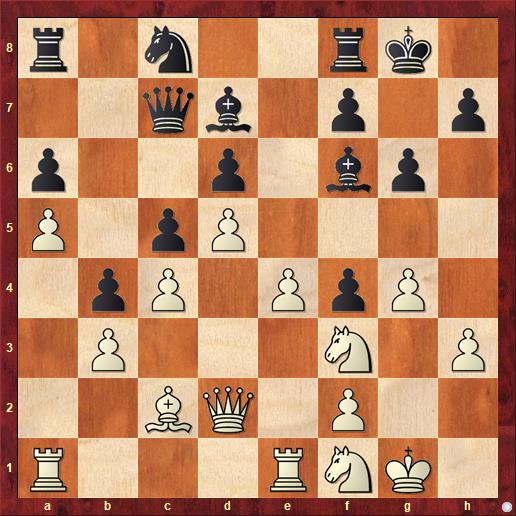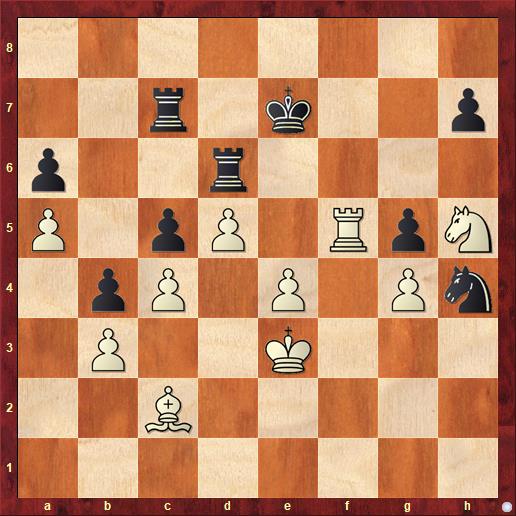Today, in the PRO Chess League, the California Unicorns faced almost inconceivable odds in their match against the St. Louis Arch Bishops. The magnitude of the difficulty becomes quite apparent when you look at the two teams’ lineups.
St. Louis: Fabiano Caruana, Leinier Dominguez Perez, Wesley So, Le Quang Liem
California: Dariusz Swiercz, Grigoriy Oparin, Daniel Naroditsky, Steven Zierk
It’s not that California has such a bad lineup; they’re all grandmasters. But take a look at St. Louis! You have a former world blitz champion on board four. You have the current Fischer Random world champion on board three. You have Caruana on board one, who has just come off one of the greatest tournaments of his life, winning the Tata Steel tournament in the Netherlands by two points over the world champion, Magnus Carlsen.
Finally, just looking at ratings: the lowest-rated player for St. Louis is better than the highest-rated player for San Francisco, and by a substantial amount (50 points). You can certainly have upsets in individual games, especially in a blitz time control. But to win a 16-game match, when you’re outrated in every game by 50 to 250 points, is just not going to happen.
So (drum roll, please) …
It didn’t happen. Not even close. Not even after the Unicorns caught an unbelievable, huge break: Caruana lost two games because of horrific, 1600-level blunders (or worse). In round one against Zierk, Caruana overlooked a pin and lost a piece. He fought valiantly and nearly pulled out a comeback draw, but Zierk never lost his cool and managed to navigate a ferociously complicated Q+N+P versus Q+P endgame with only 20 seconds left on his clock. In round three against Oparin, Caruana blundered in the first ten moves, letting Oparin take a poisoned pawn on b7 and a poisoned rook on a8 that turned out not to be poisoned enough.
Certainly the only conceivable scenario where California would have had a chance was this scenario, where Caruana went 2-2. But the rest of the St. Louis team was merciless, and ironically their scores were better on the lower boards. Dominguez Perez scored 2.5-1.5 on board two. So scored 3-1 on board three. And Le was a hero on board four, going 4-0. Final score, 11.5 – 4.5, a blowout.
Such is life in the newfangled no-rating-limit PRO Chess League. The best teams are just miles and miles ahead of the competition.
Another irony is that Caruana, aside from his two awful blunders, played some of the best chess of the day. Especially impressive was this game, where he blows Daniel Naroditsky out with two exchange sacs, 20 moves apart.

FEN: r1n2rk1/2qb1p1p/p2p1bp1/P1pP4/1pP1PpP1/1P3N1P/2BQ1P2/R3RNK1 w – – 0 22
It’s worth noting that Caruana (playing White) has already committed himself to a sacrifice, because 22. Ra2 would be met by the skewer 22. … Bc3. A real alternative is the pawn sac 22. e5, which the computer likes best. But Caruana, who undoubtedly had already planned to sacrifice the exchange, plays the simplest approach.
22. Qxf4! …
Let’s talk about why this sacrifice works. First, Black has one piece, the knight, that is absolutely impotent. In this position it can only go to a7, c8, and e7, and it’s far from clear how it will ever become an active piece. Second, this is the worst kind of position for the rooks, because there are no open files for them. We’ll see this factor in a very extreme version before the game is over. Basically, White’s sacrifice carries no risk at all, because Black’s pieces have no hope of organizing effective pressure.
That doesn’t mean White is winning. In fact, as late as move 35 the computer evaluates the position as even. But it’s always going to be Black who has to make the hard decisions and defend, defend, defend. Even in a blitz game — or especially in a blitz game — this is hard to do.
22. … Bxa1 23. Rxa1 f6 24. Ng3 Ne7 25. Qh6 Rf7 26. Kg2? …
I don’t want to micro-analyze this game because I think Caruana’s motivation at this point was entirely strategic. He just wants to keep putting pressure on Naroditsky, and isn’t in any hurry. However, it is worth noting that the computer already says that 26. e5! is winning for White! The first idea is that 26. … de 27. Ne4 threatens both d6 and Nxf6+ (followed by Ng5 with a winning attack). The second idea is that 26. … fe allows 27. Ng5 Rg7 28. Nh5!!, again with an overwhelming attack.
Both of these lines are challenging to calculate, so I’ll leave them to you or your computer. One thing that comes out especially clearly is the strategic weakness of the bishop on d7 and knight on e7. They are “dead wood” that cannot help defend the kingside and actually interfere with any possible defense by the queen or queen rook on Black’s second rank.
26. … Qd8 27. Nh4 Qf8 28. Qxf8+ Rfxf8
The queen trade in no way makes Black’s defensive task easier.
29. f4 g5!?
A weakening move, but I can totally understand that Naroditsky wanted to finally give his knight some life.
30. Nhf5 Ng6 31. Nxd6 Nxf4+ 32. Kf3 Rad8 33. Nb7 Rc8 34. Rh1 Ng6 35. Ke3 Rc7?
The computer says that the position is still equal after 35. … Ne5. The text move is exactly the sort of mistake that Caruana was hoping for: after a long defense, Naroditsky misplaces one of his pieces. The move 35. … Rc7 looks extremely natural (it’s probably what I would have played). But it only chases White’s knight to a better square. What’s worse is that Black needs to answer Nd6 with Rd8, but now he has to use the “wrong” rook to do so, thus leaving the f6 pawn undefended. This is what happens when you ask your pieces to do too many things at the same time.
36. Nd6 Rd8 37. Nh5! Kf8
Probably Naroditsky had been counting on 37. … Bxg4, but it is answered here by 38. Nxf6+! That’s why it was so crucial to keep the f-pawn defended.
38. Rf1 Ke7 39. Rxf6 Bxg4 40. hg Rxd6 41. Rf5 Nh4
Obviously Black was getting desperate by this point. The obvious move 42. Rxg5 would win for White, but Caruana comes up with a much more stylish finish.

FEN: 5k2/2r4p/p2r4/P1pP2pN/1pP1P1Pn/1P2K3/2B5/8 w – – 0 22
42. e5! …
Rooks are really bad at stopping connected passed pawns, and now they are going to have to face three of them!
42. … Nxf5 43. gf Rh6 44. Bd1! …
Lots of moves would win, but I like this one because it emphasizes how much stronger White’s minor pieces (and pawns) are than Black’s rooks. The rooks have no open files, and they are powerless to create counterplay.
The rest is pretty easy, but it’s noteworthy how White takes his time and brings all of his pieces forward, not just his pawns.
44. … Kf7 45. Bg4 Kf8 46. Ke4 Rg7 47. f6 Rf7 48. Kf5 Black resigns
Understandably, Black doesn’t want to see the three pawns marching to the sixth rank after 48. … Rg6 49. e6 Ra7 50. d6.
Although today’s match was more like a mash, at least Zierk and Oparin will enjoy telling their grandchildren about the day they beat the #2 player in the world.



{ 1 comment… read it below or add one }
Hello Dana, (AKA Champ)
Great to hear about Stephen Zierk’s win over Caruana. Wow!. I’ve been one of his fans for a long time.
You two have a couple of things in common. Like you, he also tied for first in a Kolty Chess Club championship. He also attended one of my chess parties.
Mike Splane